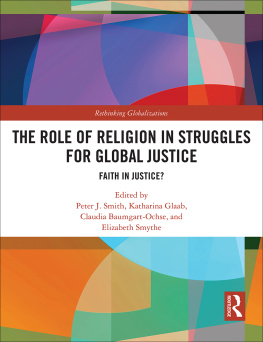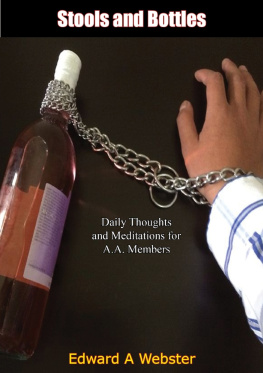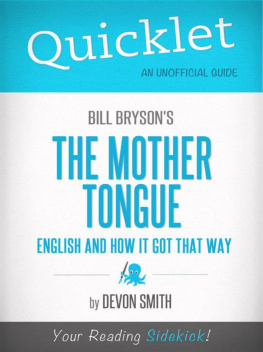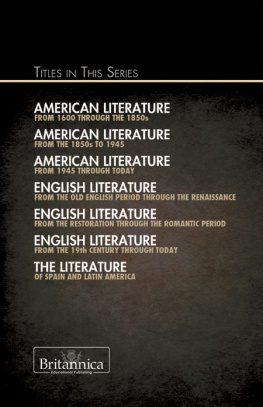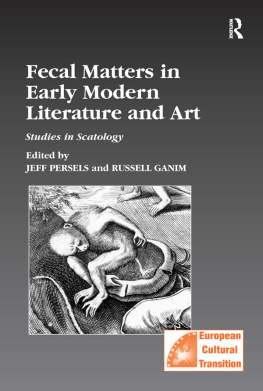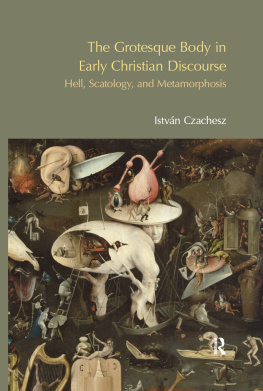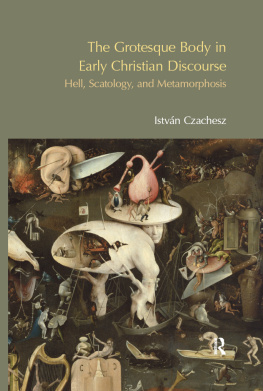Between two stools
Scatology and its representations in English literature, Chaucer to Swift
Peter J. Smith
Manchester University Press
Manchester and New York
Distributed in the United States exclusively by Palgrave Macmillan
Copyright Peter J. Smith 2012
The right of Peter J. Smith to be identified as the author of this work has been asserted by him in accordance with the Copyright, Designs and Patents Act 1988.
Published by Manchester University Press
Oxford Road, Manchester M13 9NR, UK
and Room 400, 175 Fifth Avenue, New York, NY 10010, USA
www.manchesteruniversitypress.co.uk
Distributed in the United States exclusively by
Palgrave Macmillan, 175 Fifth Avenue, New York,
NY 10010, USA
Distributed in Canada exclusively by
UBC Press, University of British Columbia, 2029 West Mall,
Vancouver, BC, Canada V6T 1Z2
British Library Cataloguing-in-Publication Data
A catalogue record for this book is available from the British Library
Library of Congress Cataloging-in-Publication Data applied for
ISBN 978 0 7190 8794 3 hardback
First published 2012
The publisher has no responsibility for the persistence or accuracy of URLs for any external or third-party internet websites referred to in this book, and does not guarantee that any content on such websites is, or will remain, accurate or appropriate.
Typeset
by Action Publishing Technology Ltd, Gloucester
For Nessie, Arel and Skipper
Fundamentally, theres something religious about the fact that were made of shit. We consist of the stuff. (Gilbert and George, www.tate.org.uk/modern/exhibitions/gilbertandgeorge/rooms /room13.shtm)
Having a crap is one of the most relaxing and intimate moments one has. (Antony Gormley, The Guardian, 28 August 2010, p.11)
We are here on Earth to fart around. Dont let anybody tell you any different. (Kurt Vonnegut, A Man Without a Country (Bloomsbury: London, 2006), p. 62)
Interestingly, while human sweat is a more or less socially acceptable dirty substance, and even human urine apparently seems to have been historically more acceptable than it is today, human faeces are certainly not. We have a very low threshold of tolerance to turds or even mention of them. (Virginia Smith, Evacuation, Repair and Beautification: Dirt and the Body, in Rosie Cox et al., Dirt: The Filthy Reality of Everyday Life (Profile Books: London, 2011), 736, p.13)
Farts are not all equal. Most are ho-hum, run-of-the-mill farts that are just a question of necessity. Some, however, are great and noble farts. They have resonance, volume, stink, they bring relief, express ones mood, extend the self outward; they are ones very soul expressed, squeezed, enfleured, captured, and displayed as an offering of the self, available just for a moment, then gone on the wind. In erupting from the body, the fart splits the body open, rendering it no longer single and hermetically sealed. Its orifice apert, the body has become double within itself; difference and otherness are within. This is the Fart Absolute, the distillate of distillate of ones being. (Valerie Allen, On Farting: Language and Laughter in the Middle Ages (Palgrave: Houndmills, 2007), p. 102)
Contents
Fifteen or twenty members of a department of English Literature seated around a table justifying to the Head of Research a particularly humourless Professor of Chemistry their areas of academic expertise. The professor has little interest in the Humanities and barely conceals his boredom when one enthusiastic lecturer details her study of nineteenth-century female autobiography. Mention of the more canonical authors causes him to ask a desultory question or two but in general he is, like a parodic version of himself from a Times Higher Education sketch by Laurie Taylor, only really interested in the production of income, grant capture or the commercial exploitation of research a tall order given the departments unmitigated dedication to literary and thus non-income-generating subjects. The discussion rotates until it arrives at a member of the department who outlines his interest in the representation of flatulence and the historical shifts in the literary accounts of excrement. The professor turns a dark purple and, outraged, enquires how this is to be kept off the front pages of the newspapers: Tommy Taxpayers Education Funding Flushed Down the Pan; Scholars Talk Shite or Crappy Academic in So-called Research Fiasco. He is adamant: the university will be pilloried in the media and brought into disrepute. The inquisitee is non-plussed and crumbles, muttering something about the university having an external relations department or press officer to deal with precisely such crises. A more senior member of the department wades in to his rescue with the golden words academic freedom, and the discussion moves on around the table.
While such hostility typifies one response to the professional study of scatology, the other more common reaction is bemusement. Introduced at conferences as the man who works on poo, I have long been accustomed to entertaining other delegates with obscure fart stories, some of which appear in the following pages. In fact the intellectual justification of ones research, it seems to me, comes only after the event, that is, once ones interest in a topic is aroused and one has dedicated at least some thought and time to the area. Any justification is thus bound to be post-hoc.
In his foreword to David Ingliss sociological account of defecatory manners, Mike Hepworth avers that a historical sociology of excretion... no longer requires a coy subtitle or indeed any further academic justification.1 But isnt this protesting too much? After all, Mary Douglass Purity and Danger appeared in 1966 while Norbert Eliass The Civilising Process dates back to 1939. John G. Bourkes Scatologic Rites of All Nations (1891) is well over a century old. However, the abiding irritation of the Chemistry Professor and the laughter of the conference delegates seem to suggest that scatology as an academic subject remains novel enough to arouse responses, negative or positive, which place it, if not outside, then at least at the margins of traditional scholarly discussion. Whether this monograph will facilitate its integration within the acceptable boundaries of academic discourse remains to be seen. In one way, I hope it doesnt.
NOTE
David Inglis, A Sociological History of Excretory Experience: Defecatory Manners and Toiletry Technologies (Edwin Mellen Press: Lampeter, 2000), p. xv.
Frankly, like a costive misfit from a poem by Swift, I have laboured for a long time to void this excrementitious matter. The assistance and patience of those along the way has been both generous and astounding. The Arts and Humanities Research Council and Nottingham Trent University funded various periods of leave. Individuals who have read draft chapters, offered advice, specific references or just intellectual and moral support are legion. Among their number are Neil Allan, Valerie Allen, Diana Barnes, Alan Brissenden, Paddy Bullard, Gordon Campbell, Roger Craik, Kevin Crawford, Sarah Cummins, Michael Davies, Steve Earnshaw, Paul Edmondson, Steve Ellis, Russ Ganim, Bob Godfrey, John Goodridge, Beth Gregory, Michael Hattaway, Lynne Hapgood, Peter Holbrook, Peter Holland, Lisa Hopkins, John Jowett, Kate Loveman, Jean-Marie Maguin, David Matthews, Andrew McRae, Susan Signe Morrison, William Nelles, Harry Newman, Michelle OCallaghan, Jeff Persels, Ken Phillips, Paul Prescott, Chris Ringrose, Valerie Rumbold, David Salter, Hlose Snchal, Will Sharpe, Karen Shook, Priscilla Smith, Stan Smith, Mahendra Solanki, Fiona J. Stafford, James Stredder, Erin Sullivan, Jay Thomson, Susie Tombs, Janice Valls-Russell, Greg Walker, Marcus Walsh, Stanley Wells, Charles Whitworth and Greg Woods. Richard J. Larschan read more of the book in its various manifestations than he would care to remember. His expertise saved me from several clumsy errors. Any things of darkness that remain, I must acknowledge mine.


